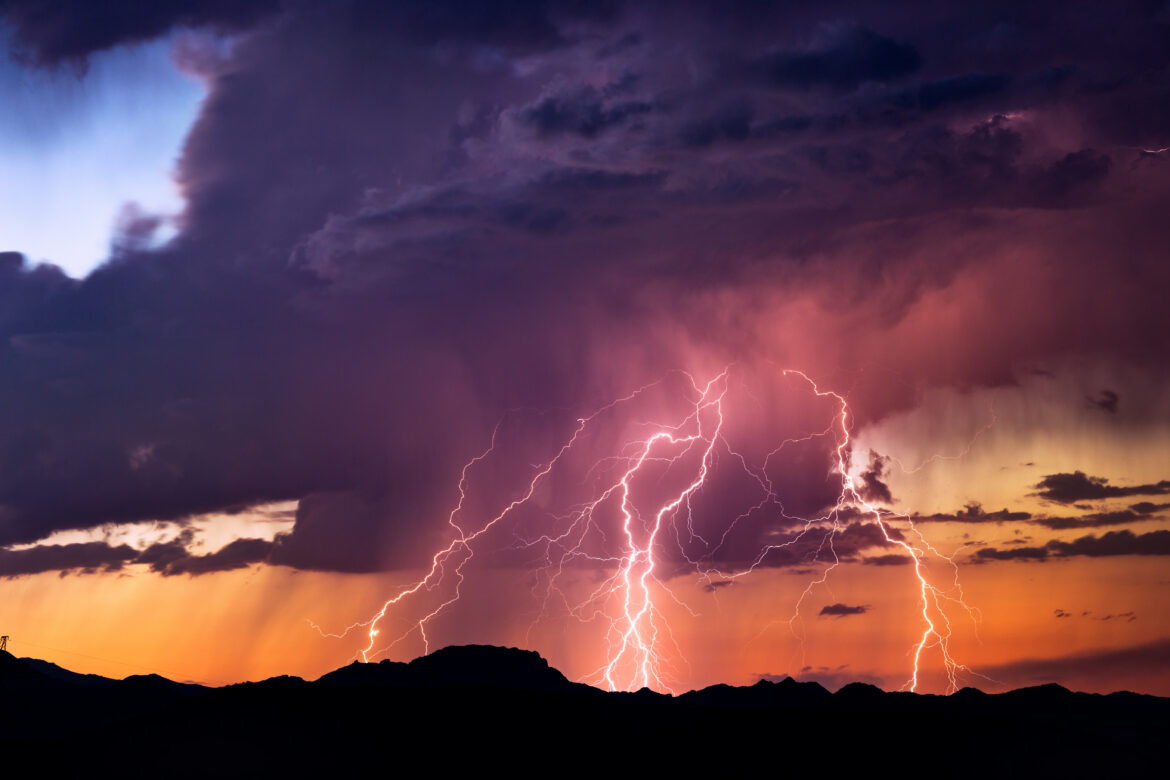In 2021, Lightning Safety Awareness Week marks the 20th anniversary of a week that was established to help create a weather-ready nation and, in doing so, increase lightning safety. Although lightning is one of the leading causes of weather-related fatalities, the Centers for Disease Control and Prevention (CDC) says that the odds of being struck by lightning in a given year are only around 1 in 500,000. However, depending on the location, season, and occupation, since people who work outside or spend time practicing outdoor activities are more exposed to the phenomenon, the chances of getting hit by lightning increases.
Lighting is a fascinating display of electricity that occurs between clouds, the air, or the ground. Nevertheless, lighting is not to be taken lightly, especially considering that more than 1,000 people are struck by lightning every year in the United States. Also, approximately 50 people are killed in the same period, and hundreds suffer permanent neurological disabilities.
According to the National Oceanic and Atmospheric Administration center, all thunderstorms share the dangerous threat of lightning. “Lightning is unpredictable, occurring at any time and striking up to 10-15 miles away from the storm.”
NASA, meanwhile, is putting to good use their learnings about lightning. They have a team of scientists dedicated to studying lightning to understand the intensity of hurricanes better. One of their discoveries assures that “…an increase in lightning within the storm signals that the storm is likely to strengthen. But sometimes even weakening hurricanes have large lightning outbreaks, so forecasters must carefully analyze additional data to determine what a lightning outbreak really means for predicting a hurricane’s intensity.”
Patrick Duran and team, who support NASA’s Research and Analysis Program, Weather Focus Area, as part of the Short‐term Prediction Research and Transition Center at NASA’s Marshall Space Flight Center in Huntsville, Alabama, recently published a study on the evolution of lightning flash density, flash size, and flash energy during Hurricane Dorian. They used a new tool on National Oceanic, and Atmospheric Administration’s latest series of Geostationary Operational Environmental Satellites called the Geostationary Lightning Mapper (GLM) to capture information about lightning in hurricanes. GLM continuously detects the size and energy of lightning flashes, even over the open oceans.
With still much more to discover, Lightning Safety Awareness Week brings us an opportunity to expand our curiosity about lighting. Here’s what to learn about the fascinating phenomenon.
- The World’s 5 Biggest Lightning Hot Spots are in the following destinations:
- The World’s 5 Biggest Lightning Hot Spots are in the following destinations: Lake Maracaibo, Venezuela, with 232.52 lightning flashes per square kilometer per year.
- Kabare, Democratic Republic of Congo, with 205.31 lightning flashes per square kilometer per year.
- Kampene, Democratic Republic of Congo, with 176.71 lightning flashes per square kilometer per year.
- Caceres, Colombia, with 172.29 lightning flashes per square kilometer per year
- Sake, Democratic Republic of Congo, with 143.21 lightning flashes per square kilometer per year.
Source: Outside
- There are an estimated 25 million cloud-to-ground lightning flashes each year in the United States, nearly 800,000 of which occur in Illinois alone. Source: National Weather Service
- More than a third of lightning strike deaths occur on farms. Other common places are industrial locations and private residences. Construction and material handling such as loading and unloading are two of the most common work-related activities where lightning strikes occur. The majority of work-related lightning strikes occur in Florida and Texas, two states where seasonal lightning deaths and injuries are high. Source: CDC
- Males are five times more likely than females to be struck by lightning; around 85% of lightning fatalities are men. Source: CDC
- People aged 15–34 years account for almost half of all lightning strike victims (41%). The majority (89%) of lightning deaths occur among whites. Source: CDC
- About one-third (32%) of lightning injuries occur indoors. Source: CDC
With July approaching and the most active time of the year for thunderstorms, make sure you stay away from electrical conductors like water and metal. Also, avoid trees and power lines, stay away from open fields and higher places like hills. Consider staying near a car during a storm since many provide a safe place. Have a safe season!
 Food
Food Farmers
Farmers Sustainable Living
Sustainable Living Living Planet
Living Planet News
News